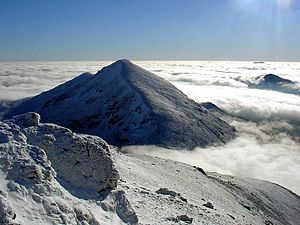National parks of Scotland
The majority of the land is in the ownership of private landowners (including conservation bodies such as the National Trust for Scotland), and people continue to live and work in the parks.
[6] Scottish-born John Muir was early advocate for the preservation of wilderness in the United States, and is acknowledged as a leading figure in the formation of national parks in the US, as well as the conservation movement at large.
Human settlement and activity, including agriculture, historical deforestation, overgrazing by sheep and deer, and extensive 20th century afforestation with introduced tree species (particularly conifers) have resulted in landscapes which are semi-natural.
[2] Nonetheless, the idea that areas of wild or remote character should be designated to protect the environment and encourage public access grew in popularity throughout the nineteenth and early twentieth centuries.
It recommended that four areas were under such pressure that they ought to be designated as national parks, each with an independent planning board, in order to retain their heritage value.
[9] In June 2005, the Scottish Executive announced their intention to create Scotland's first coastal and marine national park.
[18] As of October 2023, councils and local groups from the following areas are considering applications:[19] In July 2024 the Scottish government announced that Galloway was to be designated as the country's third national park.
[1] A key function of the authority relates to planning permission: in this respect the two current Scottish parks differ.
They can, for example, acquire land, make byelaws and management agreements, provide grants, offer advice, and undertake or commission research.



